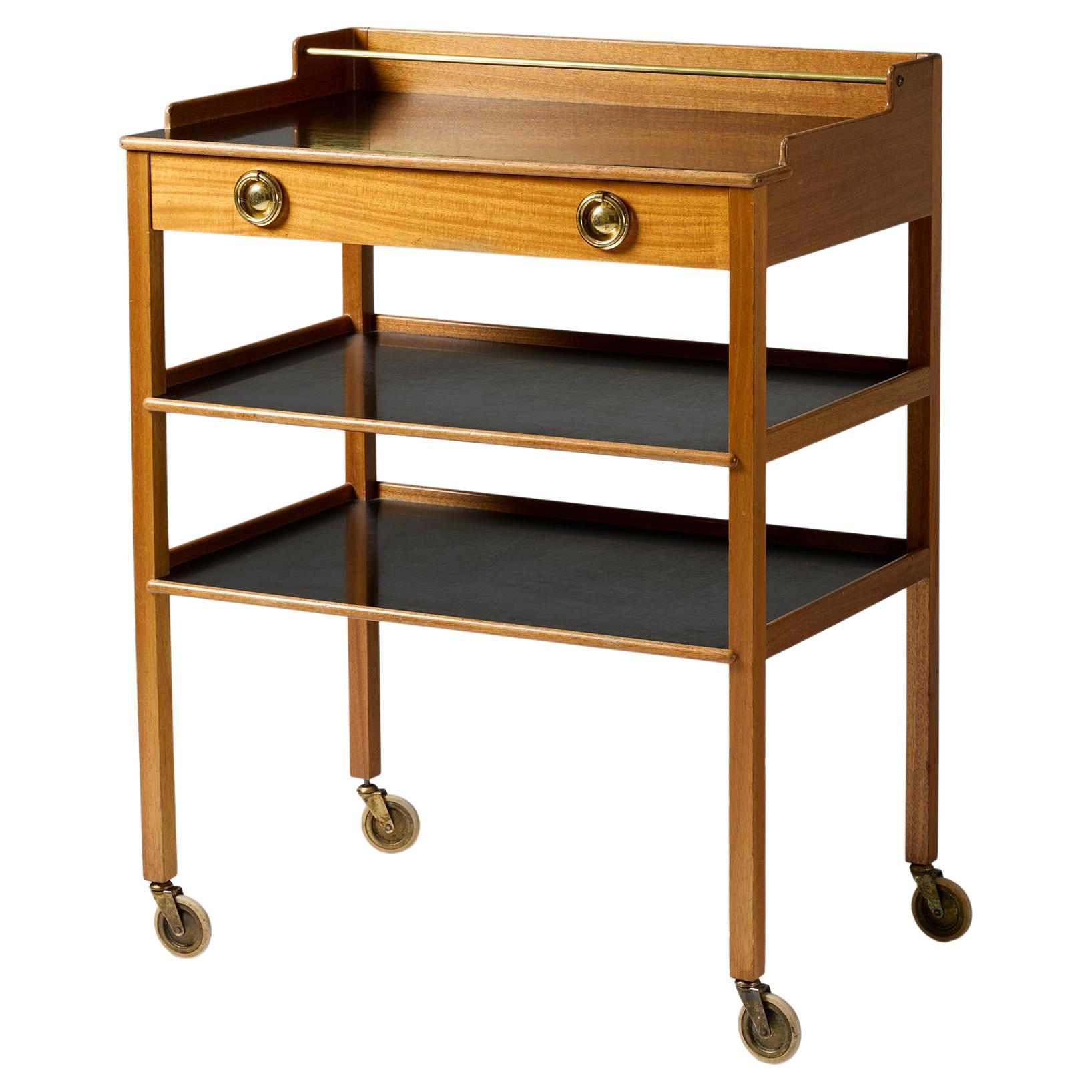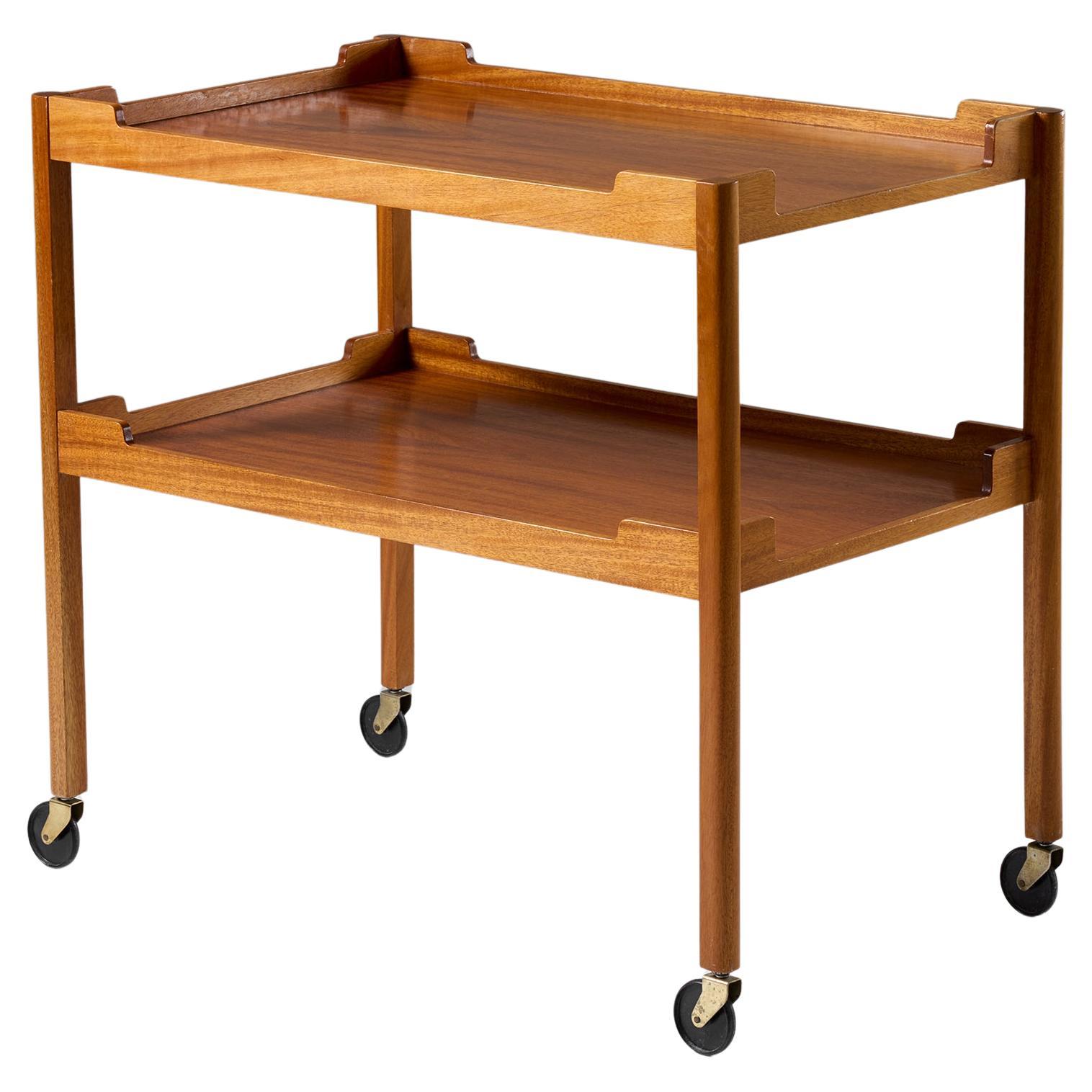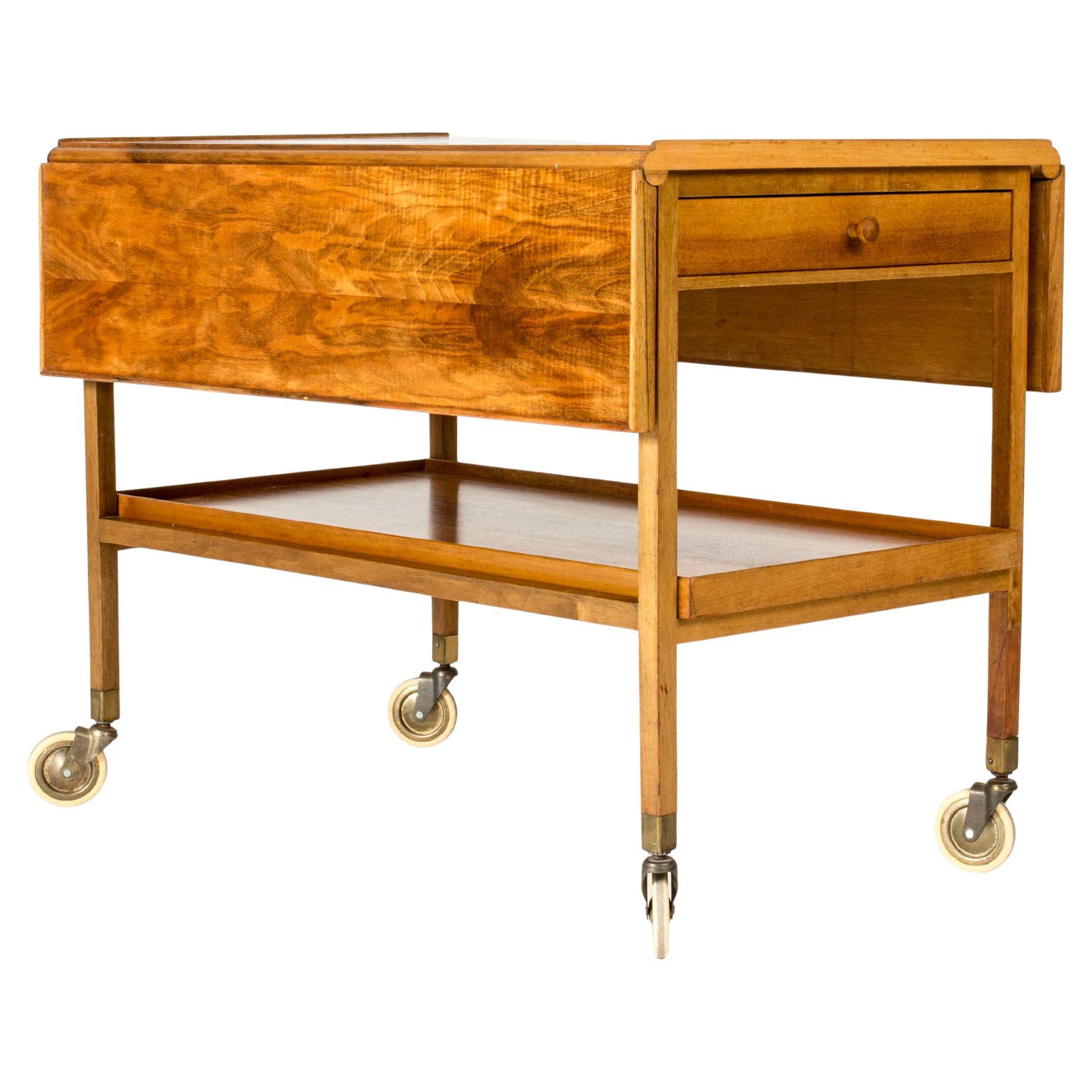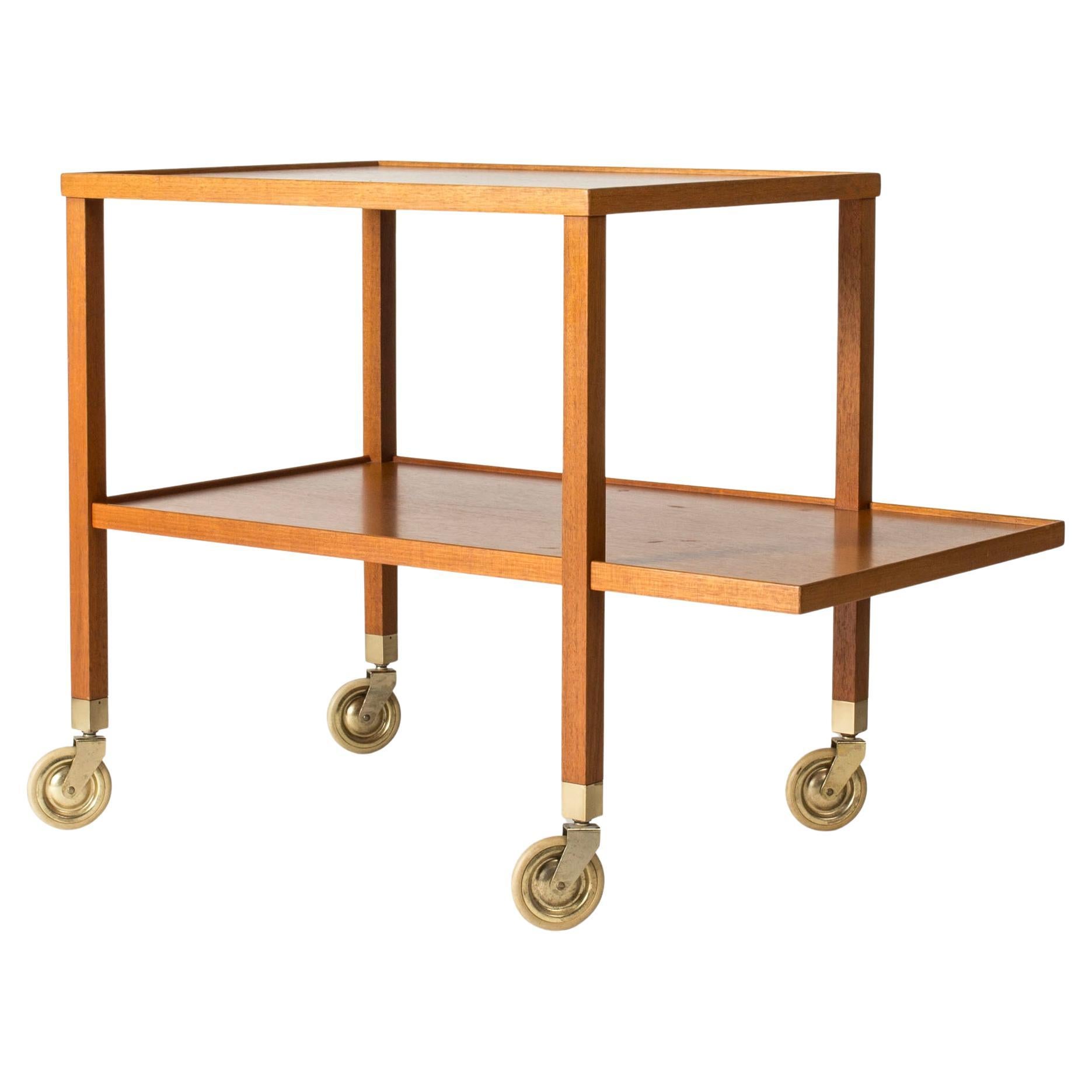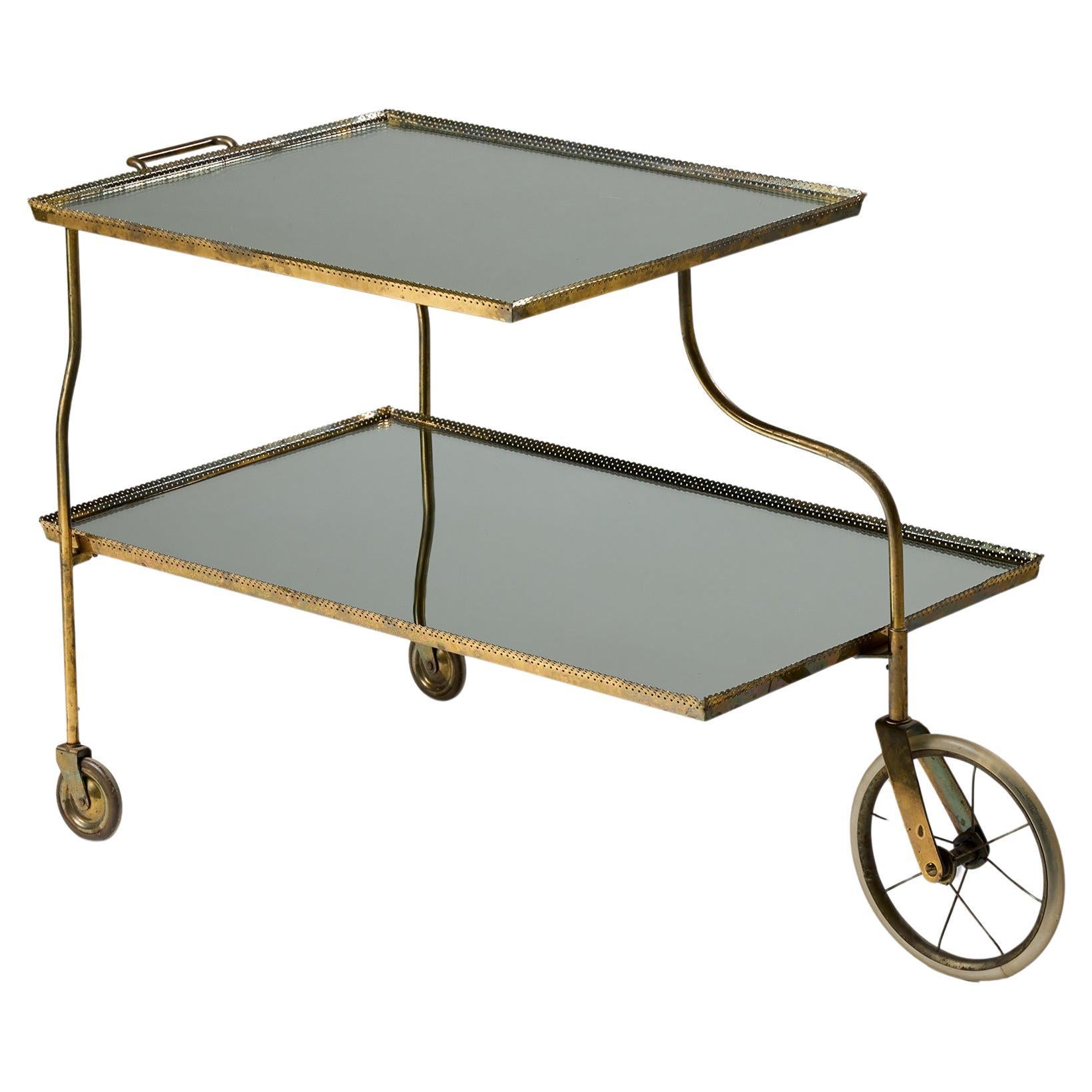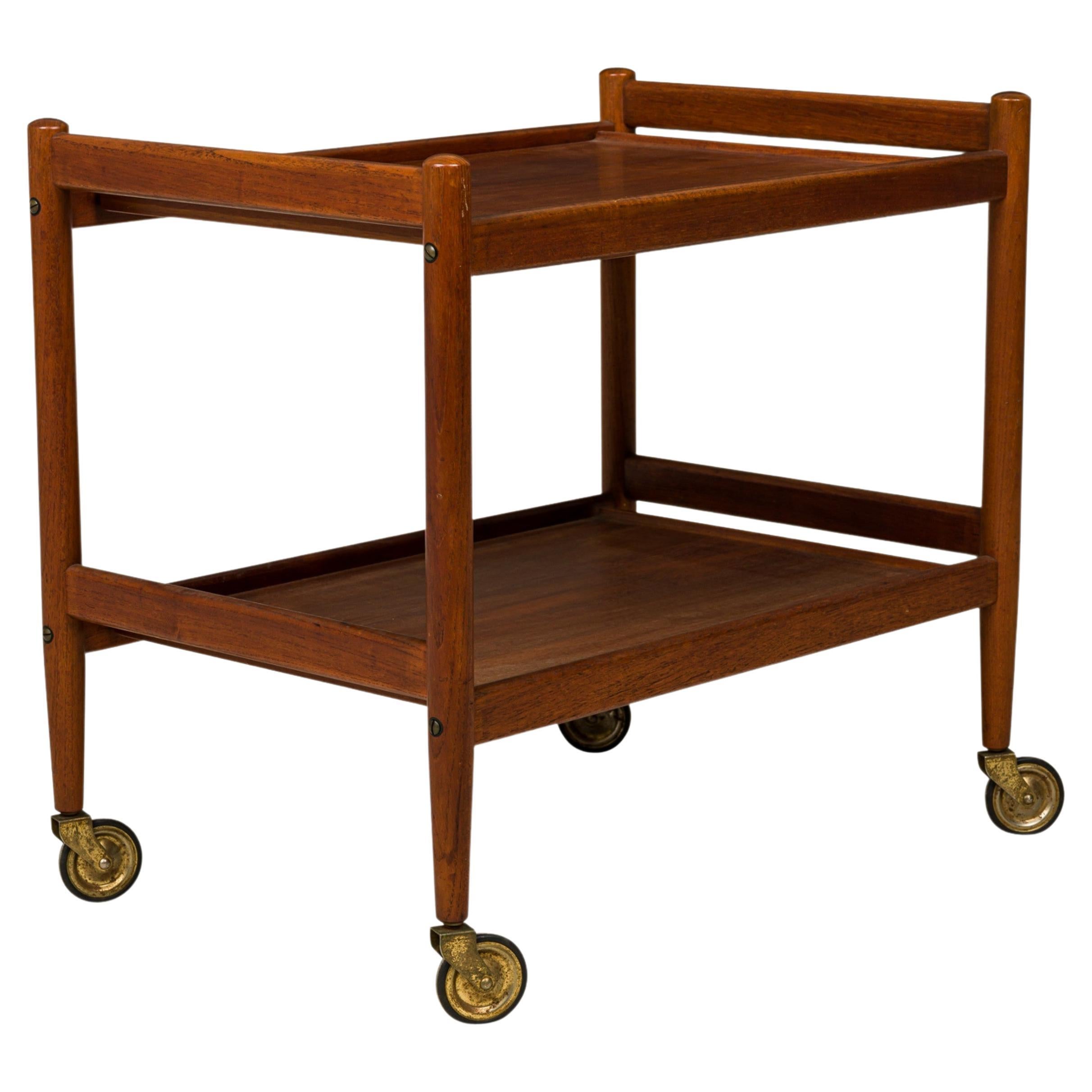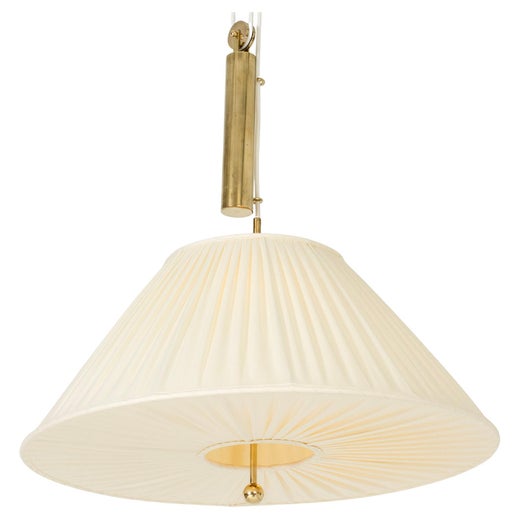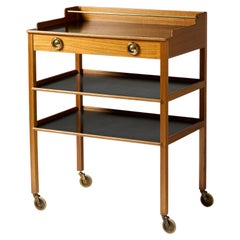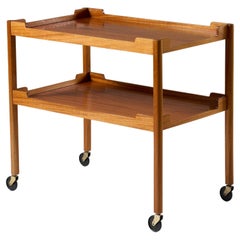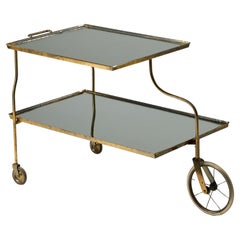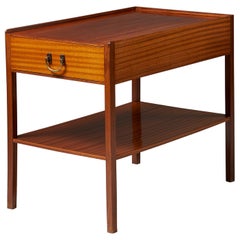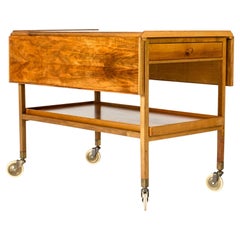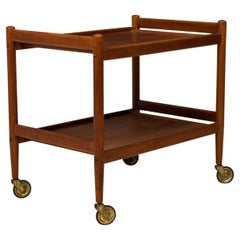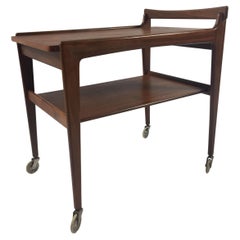Walnut and Brass Serving Trolley Model 756 by Josef Frank for Svenskt Tenn 1940s
Informazioni sull’articolo
- Creatore:Josef Frank (Designer)
- Dimensioni:Altezza: 65 cm (25,6 in)Larghezza: 89 cm (35,04 in)Profondità: 80 cm (31,5 in)
- Stile:Mid-Century moderno (Del periodo)
- Materiali e tecniche:
- Luogo di origine:
- Periodo:
- Data di produzione:1940s
- Condizioni:
- Località del venditore:Stockholm, SE
- Numero di riferimento:1stDibs: LU1006631541282
Josef Frank
L'architetto e designer di mobili e tessuti austriaco Josef Frank è stato una voce di spicco per un modernismo gentile e umano. La sua idea di ambienti caldi, confortevoli e dallo stile eclettico fu molto influente nel suo paese d'adozione, la Svezia, e oggi è considerata un precursore del contraccolpo contro il modernismo dottrinario e dell'abbraccio con la casa, avvenuto alla fine degli anni Sessanta.
Figlio di un industriale tessile viennese di successo, Frank studiò architettura presso la University of Vienna, laureandosi nel 1910. Fin dai primi anni del suo studio, si oppose alle disposizioni e ai decori architettonici ordinati e simmetrici prescritti da contemporanei come Adolf Loos.
Frank progettò stanze di forme diverse e richiese una disposizione flessibile degli interni. I suoi mobili sono leggeri e facili da spostare - e le sue sedie sono sempre in legno, spesso con braccioli curvati a vapore e schienali a doghe. Steele detestava apertamente l'arredamento in acciaio tubolare e l'estetica "macchina per vivere" promossa da Le Corbusier e Ludwig Mies van der Rohe e altri Principals del Bauhaus. "La casa non deve essere una semplice macchina efficiente", disse una volta Frank. "Deve offrire comfort, riposo e intimità.... Non ci sono principi puritani in una buona decorazione d'interni".
Frank, che era ebreo, intuì le terribili implicazioni dell'ascesa del nazismo in Germania e in Austria e nel 1933 si trasferì a Stoccolma con la moglie svedese Anna. Diventa responsabile del design per il produttore di arredi Svenskt Tenn e trova un perfetto riscontro culturale per il suo marchio di creazioni semplici, rilassate e luminose. Come molti modernisti - in particolare Charles e Ray Eames e Alexander Girard - Frank aveva un profondo amore per l'arte popolare che ha influenzato i suoi design per una vasta gamma di tessuti per tappezzeria colorati e ricchi di motivi, molti dei quali basati sul classico motivo dell'"Albero della Vita".
In tutti i suoi progetti, Frank si è ispirato a un'ampia varietà di fonti. Nei suoi mobili si possono scorgere tracce di modelli asiatici, rococò, rinascimento italiano, artigianato scandinavo e persino pezzi Chippendale. Per questo motivo, l'opera di Frank - il simpatico modernista - si adatta a qualsiasi tipo di arredamento.
Trova cuscini vintage di Josef Frank , poltrone , lampade da terra, e altri mobili su 1stDibs.
- SpedizioneRecupero del preventivo…Spedizione da: Stockholm, Svezia
- Politica di reso
Altro da questo venditore
Mostra tuttoVintage, Anni 1950, Europeo, Stipi
Ottone
Vintage, Anni 1940, Svedese, Tavoli buffet
Mogano
Vintage, Anni 1940, Svedese, Carrelli bar e portavivande
Ottone
Vintage, Anni 1950, Svedese, Mid-Century moderno, Tavolini laterali
Ottone
Metà XX secolo, Svedese, Mid-Century moderno, Tavolini laterali
Ottone
Vintage, Anni 1950, Svedese, Scandinavo moderno, Tavolini laterali
Mogano
Ti potrebbe interessare anche
Vintage, Anni 1950, Svedese, Scandinavo moderno, Carrelli bar e portaviv...
Mogano
Vintage, Anni 1950, Svedese, Scandinavo moderno, Carrelli bar e portaviv...
Mogano
XX secolo, Danese, Mid-Century moderno, Carrelli bar e portavivande
Legno, Teak
Vintage, Anni 1960, Danese, Mid-Century moderno, Carrelli bar e portaviv...
Teak
Vintage, Anni 1960, Danese, Scandinavo moderno, Carrelli bar e portavivande
Teak
Vintage, Anni 1960, Danese, Mid-Century moderno, Carrelli bar e portaviv...
Formica, Palissandro
